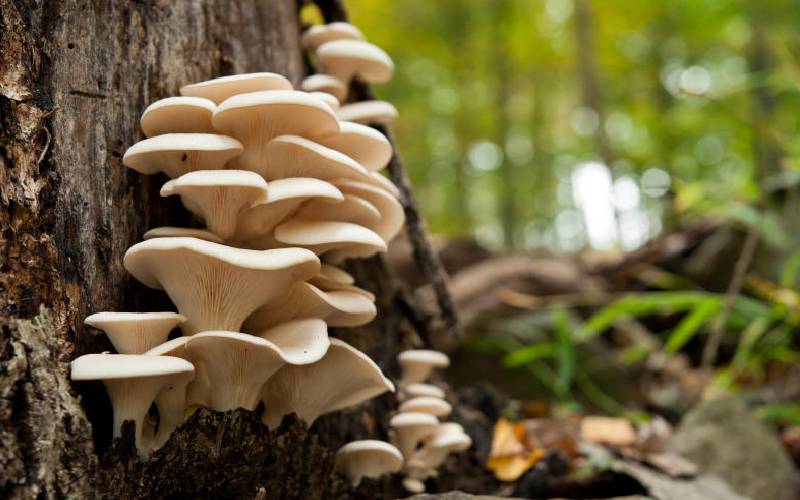
Mushroom farming is now becoming popular and a job creator for many young people.
Mushrooms are rich in antioxidants, lean proteins and essential vitamins.
The challenge is the sensitive production process given that they do not grow in soil.
One established farmer in Nderi in Kikuyu, Evelyne Ndung’u takes Money Maker through the delicate process. She first prepares her mushroom, plants them, harvests and packs them for sale.
Structure
Ndung’u says the most appropriate and cost-effective structure for mushroom production is a grass-thatched mud house.
However, you can still do this in your house or apartment as long as you have a dark room that is well ventilated. Ndung’u started with a room that holds 450 small bags of mushrooms.
Mushrooms, which have 80 to 90 per cent water content, need a humid environment to thrive. To achieve that, sprinkle water in the room throughout the day.
Install wooden shelves in the room to increase the vertical space.
It cost Ndung’u Sh150,000 to set up her mushroom business.
“I used Sh40,000 for constructing the shelves and labour, the rest I used in getting the seeds, buying and preparing the substrate,” says Ndung’u.
Varieties Available
The most popular varieties in Kenya are Button mushrooms. White button mushrooms are small to medium in size with caps averaging two to seven centimetres in diameter and are attached to short, truncated stems.
Oyster and Shiitake are other varieties available. Ndung’u grows the white button mushrooms.
Materials
The seedlings are planted in nylon bags. They cost about Sh100, for 200 pieces. Bigger bags cost Sh15 per piece. Ndung’u does 450 bags of mushrooms.
Getting the substrate
This is basically the compost on which mushrooms grow. There are several substrates one can use. They include rice, millet and wheat straw.
“The substrate should have a great supply of nitrogen that is a requisite for mushroom growth. Before making use of the substrate, ensure you sterilise it from bacteria,” says Ndung’u.
She mixes several substrates to increase the nitrogen content. She uses wheat bran, cottonseed, gypsum, lime which she mixes with molasses and chicken manure to make compost.
“It takes four to five weeks for the substrate to be ready,” explains Ndung’u. Once ready, it is transferred into the bags and taken into the shelter.
Spawning
One needs the spawn, which is basically the mushroom seed.
Some of the sources are research and seed propagating institutions like Jomo Kenyatta University of Agriculture and Technology (JKUAT) and Kenya Agricultural and Livestock Research Organisation (KALRO).
One kilogramme of button mushroom spawns goes for Sh1,000.

Pack the mixture of substrate and spawn in the small plastic bags. One kilogramme of spawn mixed with the substrate can be spread in 25 small plastic bags.
Incubation
Place them on the shelves and incubate for two weeks without touching them. During these two weeks, the substrate will be colonising, until it turns completely white.
When that happens, make small holes around the bags so that the mushrooms can start sprouting.
Introduce some light after making the holes. Ensure the room is humid by sprinkling water throughout the day. Temperatures should also be between 18 to 21 degrees.
Mushrooms thrive under high hygiene standards. Farmers are advised to be careful when pasteurising.
To achieve that, a farmer should ensure their hands are sterilised when inoculating the spawn. Also, ensure that the house is pest-proof while allowing in fresh air.
Some of the common pests that affect mushrooms include green moulds, pink and grey moulds and mites.
If one bag is contaminated, it will spread to all the other bags and that crop will be lost.
Returns
It takes two months for button mushrooms to mature. Additionally, 450 bags can produce about 800kg of mushrooms.
Ndung’u sells hers at Sh1,000 a kilo which translates to Sh800,000.
Her main markets are wholesalers and hotels. She also sells through online platforms.
The compost can also be sold after use. 50kg can be sold for Sh2,000.
janyango@standardmedia.co.ke

No comments:
Post a Comment